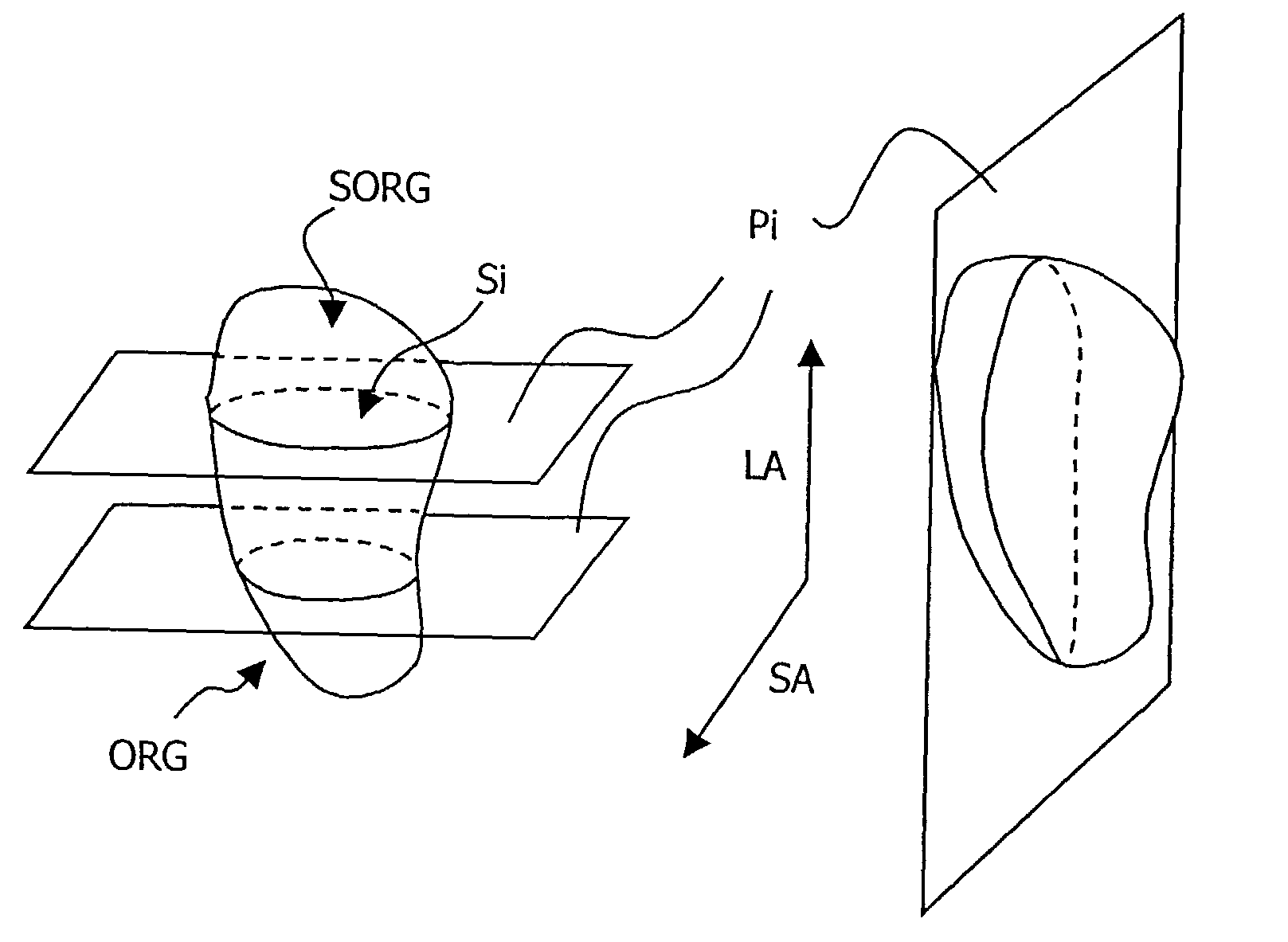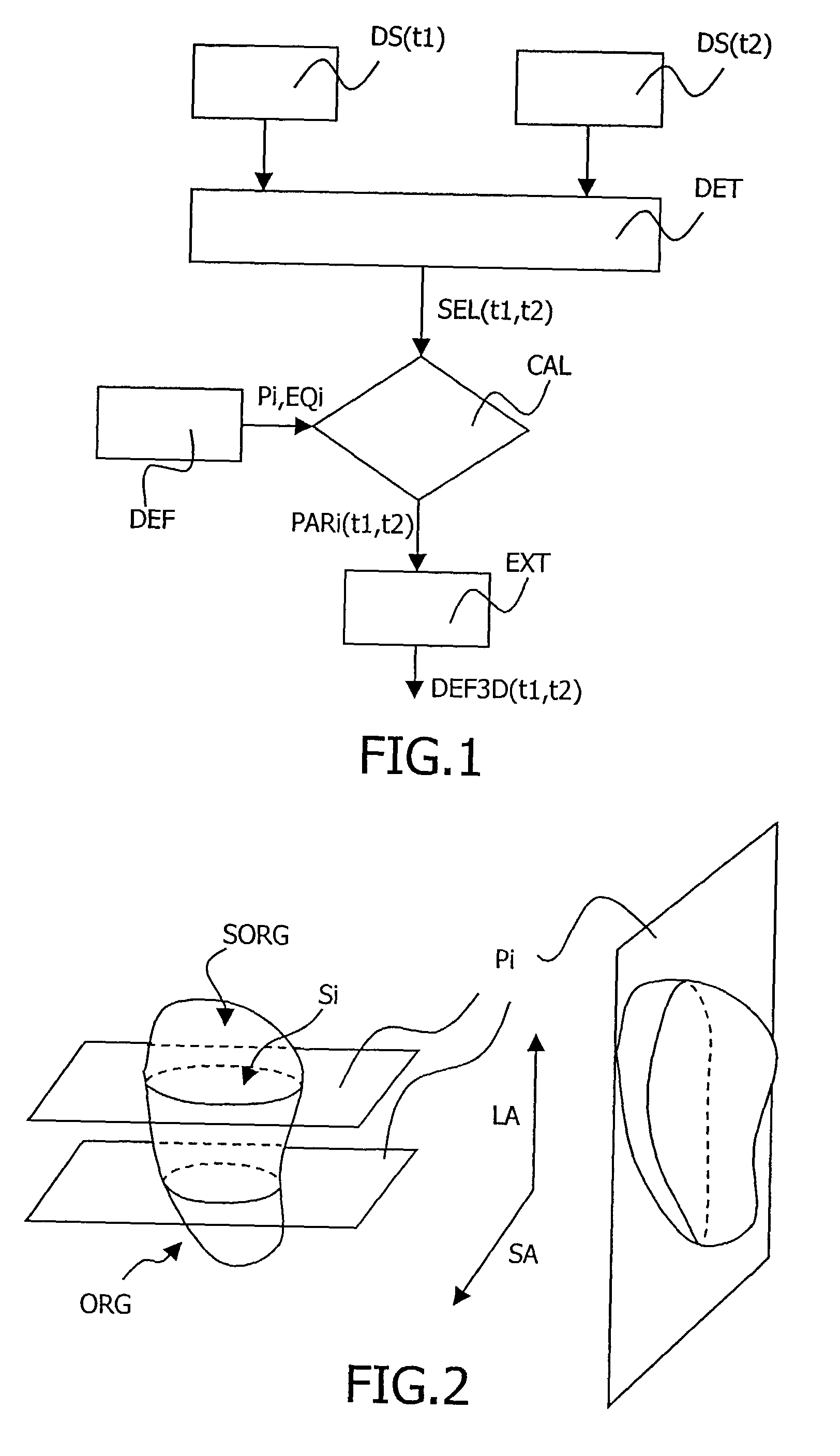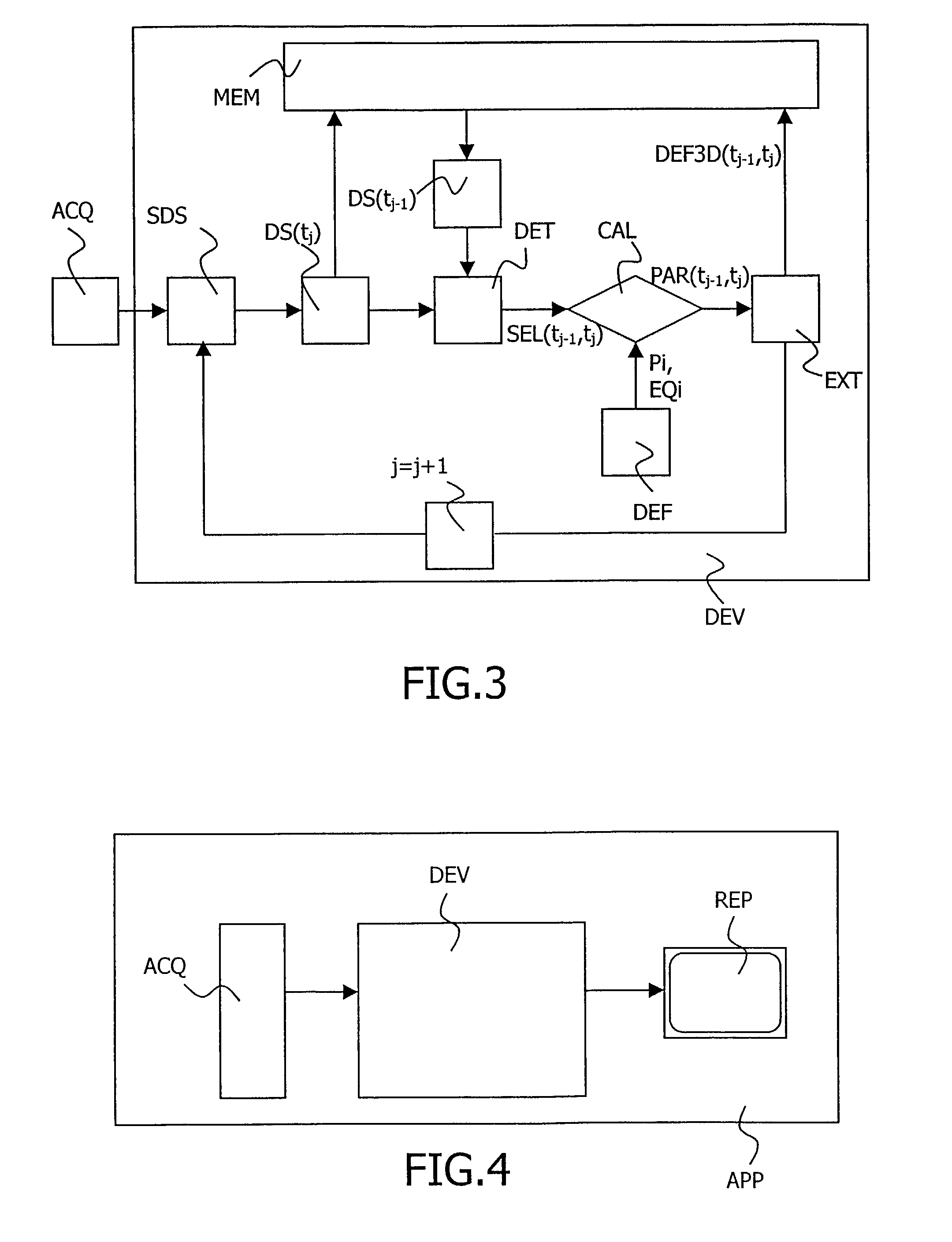Method of following the three-dimensional deformation of a deformable organ
a three-dimensional deformation and organ technology, applied in the field of three-dimensional deformation of organs, can solve the problems of difficult real-time automatic method and propagation of errors at each calculation step, so as to reduce the quantity of calculations, reduce the effect of program constraints on movement and correct the nois
- Summary
- Abstract
- Description
- Claims
- Application Information
AI Technical Summary
Benefits of technology
Problems solved by technology
Method used
Image
Examples
Embodiment Construction
[0018]The method according to the invention is applicable to the sets of data belonging to a sequence of at least two sets of data DS(t1) and DS(t2) taken at two times t1 and t2. These two sets of data represent an organ or part of an organ caused to deform over time and are generally presented in the form of images. The sets of data available will in fact be of different kinds according to the method of acquisition of the organ. These acquisition methods define several embodiments.
[0019]FIG. 1 depicts a schematic diagram of an implementation of a method according to the invention. In a first preferred embodiment, the sets of data are related to a plane of the organ observed over a sequence of a certain duration. This is the case of an organ imaged according to a spatial magnetic resonance modulation. The method according to the invention processes the sets of data where there are available points for which it is possible to establish correspondences from one set of data to another....
PUM
 Login to View More
Login to View More Abstract
Description
Claims
Application Information
 Login to View More
Login to View More - R&D
- Intellectual Property
- Life Sciences
- Materials
- Tech Scout
- Unparalleled Data Quality
- Higher Quality Content
- 60% Fewer Hallucinations
Browse by: Latest US Patents, China's latest patents, Technical Efficacy Thesaurus, Application Domain, Technology Topic, Popular Technical Reports.
© 2025 PatSnap. All rights reserved.Legal|Privacy policy|Modern Slavery Act Transparency Statement|Sitemap|About US| Contact US: help@patsnap.com



